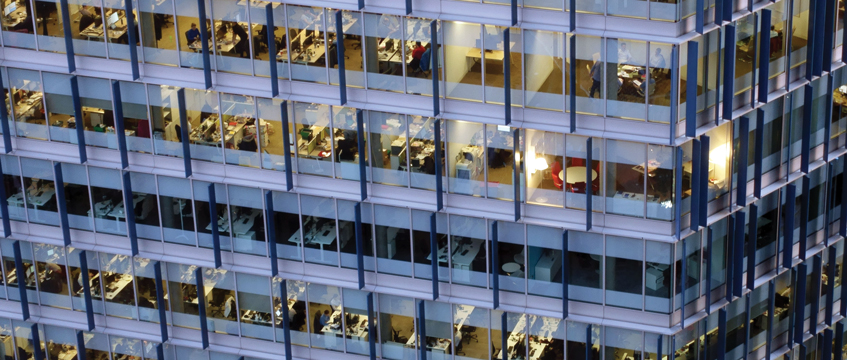COMMENT When lockdown restrictions were introduced in March 2020, nobody knew how businesses would cope with working from home. Very quickly the potential of remote working became clear, with widespread adoption, and some began to ask if it was even preferable to working in offices.
In the first flush of success, several big businesses announced they had no plans for staff to return to the office in the near future – or, perhaps, ever. With office buildings around the globe standing empty, the world of work was in a state of flux, with occupiers fundamentally questioning their future needs and the commercial property market in limbo.
The amount of space under offer remains weak by historical standards, and this year overall take-up is likely to be unimpressive. The 10,000 sq ft lettings that are the backbone of the market have declined, with small and mid-size occupiers opting to make do and mend, rolling over leases until they better understand how their staff want to operate and how their requirements for space will change.
Best in class
Looking ahead, there will be more churn over the next five years, as occupiers activate lease break options and upgrade the quality of their space. Landlords also increasingly recognise the need to be more involved, managing and improving their service, working with occupiers throughout the lifespan of a lease to create spaces that offer the best of technology, sustainability, wellness and flexibility.
While uncertainty remains about the long-term impact of increased adoption of agile working, an end appears to be in sight. As vaccinations roll out and lockdown restrictions lift, there is a sense of an occupier market on the brink of change. Agents report that viewing levels have been on the up in recent weeks, as pent-up demand, particularly from smaller companies that may have let leases expire, combines with businesses seeking new space that meets subtly altered requirements.
Unsurprisingly, demand is strongest for best-in-class buildings, as companies recognise that space which reflects modern ways of working and promotes collaboration, creativity and flexibility will be vital in giving occupiers a reason to come into the office rather than working from home.
Increased agile working, dedensification and a radical rethink of space allocation continues to create doubt, but businesses in social media and two of the top 10 international law firms have committed to long-term leases for significant amounts of space in central London in recent weeks.
Unlocking the hiatus
These dynamics are influencing the capital markets too, as investors recognise the value of future-proof properties and are prepared to pay pre-Covid pricing for the best assets. The barriers to global travel have, however, negatively impacted transaction volumes as vendors are choosing to wait until buyers can inspect buildings in person, rather than to market to a reduced audience and potentially sell for less-than-optimum prices.
Interestingly, when they choose to trade, vendors are pre-qualifying buyers with track record and in-country representation, rather than selling assets on the open market. As a result, we are seeing an increased influence of European investors in the UK compared with previous years: in 2020, roughly a third of buyers by volume were European. This is partly due to the absence of competition from buyers based further afield, but also reflects the fact that relative yields in continental Europe are low compared with the UK, and, in Germany particularly, cost of capital is low, as are hedging costs.
Having spent the last year on pause, the occupier market is about to start moving again, unlocking the hiatus with several high-profile deals already lined up.
When travel restrictions are lifted, investor demand for the best properties will return extremely quickly, and in a big way.
John Mulqueen is head of offices, EMEA at CBRE Global Investors











